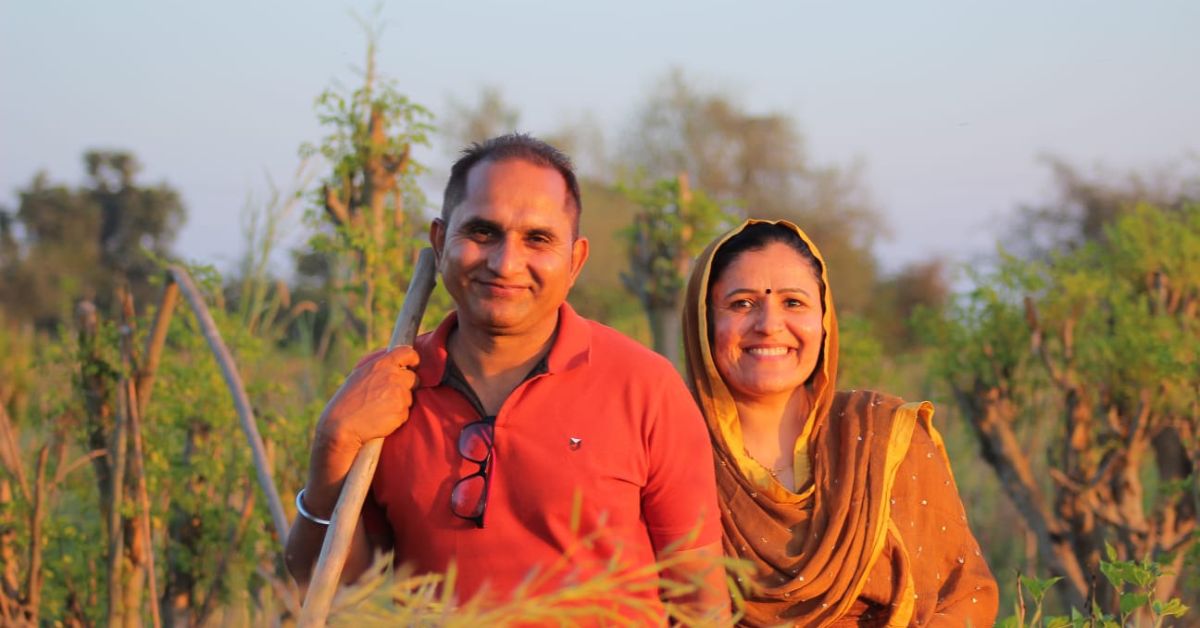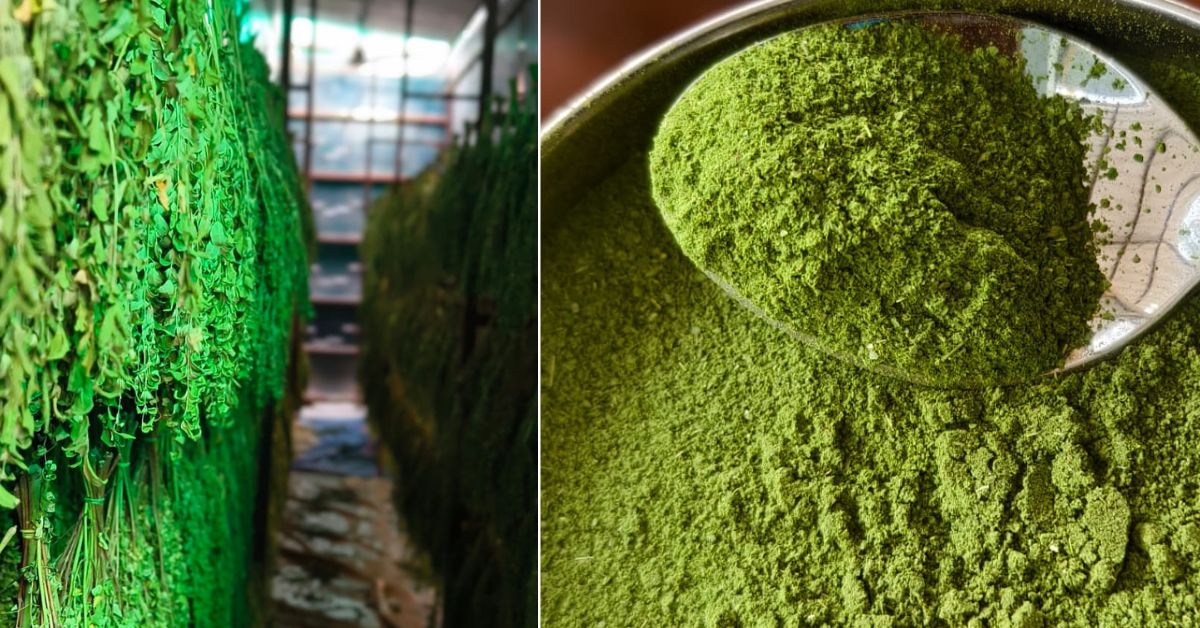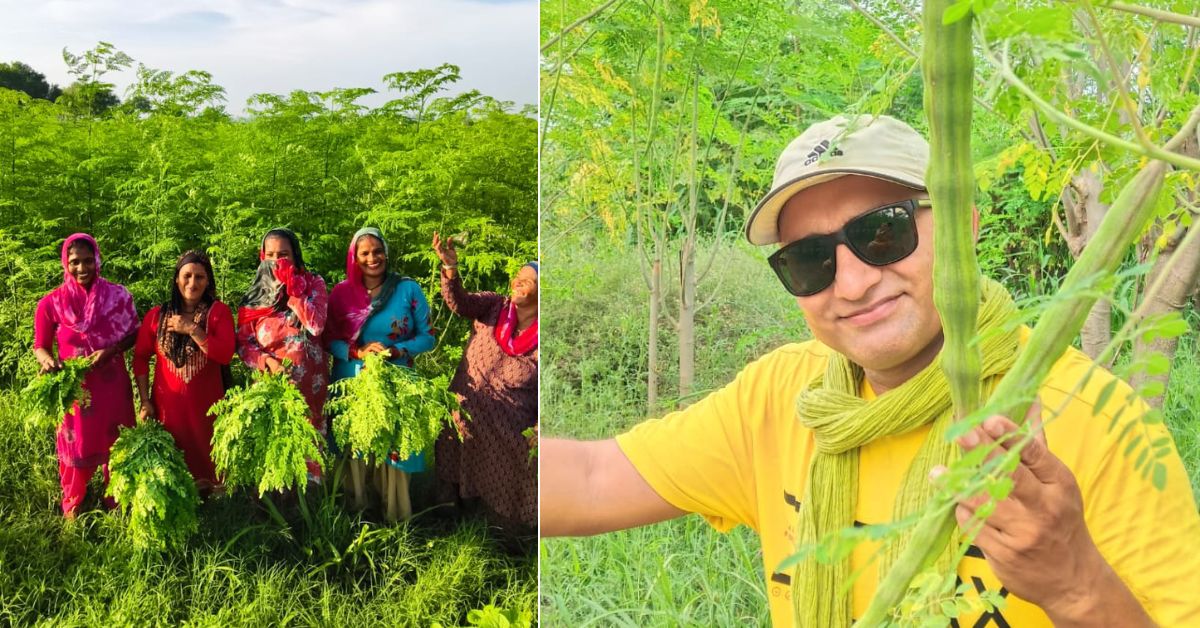In the over two decades that Jitender Mann spent in cities like Chennai, Bengaluru, and Delhi, he observed a concerning trend: rising rates of health issues among both young and elderly residents; thyroid disorders and high blood pressure appeared to Jitender as a common occurrence in urban areas. He, himself, was no exception.
“I was a workaholic during my early 20s, often being the last one to leave office at 1 am. By my early 40s, I was suffering from high blood pressure (BP) and extreme joint pains. I would commute via the metro and sit all day at a desk. I felt healthy, but once I started medication for high blood pressure, I realised I was not,” he says.
“My blood pressure was 160. It was a wake-up call for me. After starting the medication, I felt that this was going to be my new normal,” he adds.
Raised in the Laxmi Nagar area near the Yamuna river, he often witnessed farmers using polluted water to irrigate their fields. “All of Delhi consumes food produced in those fields. There was a time when only a few elderly people would complain of joint pains, but these days, even young people and toddlers are experiencing blood glucose issues. I am not an expert, but I believe everything is related to the food we eat,” he adds.

Earlier this year, an ICMR (Indian Council of Medical Research) report had revealed that an estimated 56.4 percent of India’s total disease burden was linked to unhealthy diets.
Jitender’s realisation fueled his determination to move back to his ancestral home in Mehmudpur village in Sonipat district of Haryana, alongside his wife, Sarla. In 2018, after working for 11 years at Tata Consultancy Services (TCS), he decided to become a farmer.
The couple gradually explored the healing properties of moringa and embarked on a journey to promote its potential health benefits. Today, they have developed a profitable venture by selling moringa powder to urban consumers in cities like Delhi, Gurugram, Bengaluru, Mumbai, and Ahmedabad.
Tapping into ‘miraculous benefits’
Around 2015, during his stay in Delhi, Jitender first started growing moringa on the terrace of his home. “I developed a lush green garden with vegetables such as ridge gourd, bottle gourd, and moringa,” Jitender recalls.
Impressed by the results, the couple decided to replace their wheat and paddy fields with a moringa farm after moving to their village. Starting with two acres of land, the couple gradually expanded their production to four acres.
A study titled ‘Moringa oleifera: An Updated Comprehensive Review of Its Pharmacological Activities, Ethnomedicinal, Phytopharmaceutical Formulation, Clinical, Phytochemical, and Toxicological Aspects’, published in PubMed Central (PMC), observed that moringa oleifera — often referred to as the “tree of life” or “miracle tree” — was effective in treating wounds, pain, ulcers, liver disease, heart disease, cancer, and inflammation; it was also proved to be beneficial in lowering glucose levels. As per the same study, moringa leaves are a quick remedy for inflammatory conditions such as glandular inflammation, headache, and bronchitis. “It has miraculous results,” Jitender exclaims.

Recognising the importance of preserving the nutritional value of moringa leaves, Jitender and Sarla invested in a state-of-the-art drying setup that ensures optimal drying conditions while retaining the plant’s beneficial properties. “After plucking stems with leaves, we wash them twice and bundle seven to nine stems together so that each leaf is separated for easier drying,” Sarla explains.
“We dry the leaves under large fans and also in a controlled greenhouse setup, where energy gets trapped and the temperature is 8-10 degrees hotter than outside. After 12 hours, the leaves become crunchy and we separate them from the stems. We then make a coarse powder in a pulveriser and remove stalks before packaging,” she adds.
This meticulous process, Jitender says, ensures that the nutritional content of the leaves remains in the final product for distribution. “Moringa is a summer-loving plant in North India. We harvest leaves for about seven months between April and October, with the plant remaining dormant for the remaining five months,” Jitender says.
Sarla points out that to ensure high-quality crop production, they adopted a jungle farming method. “In this method, we do not till the soil and use weeds and other leaves as mulch. We also avoid harmful chemical fertilisers, pesticides, and weedicides. This ensures that our soil has good aeration and high carbon content. You can only produce good-quality moringa leaves if your soil is fertile,” she explains.
The road to becoming a profitable venture
Sarla informs that about 1,000 kg of dry powder can be produced from one acre of land. By selling a 100-gram packet of moringa powder, the couple earns Rs 650. On average, they make sales of Rs 3.5 lakh per month and Rs 10 lakh per acre every season. They established a customer base in metro cities like Delhi, Ahmedabad, Bengaluru, Mumbai, and Gurugram primarily through word of mouth.
“We started with two acres for cultivating moringa powder, but our demand is growing at twice the rate of our production. Next year, we aim to expand our moringa fields from four to eight acres and explore international markets,” Jitender adds.

For him, the shift from a corporate career to farming has not only been professionally rewarding but has also transformed his personal health and well-being. Free from the joint pains and high blood pressure that once plagued his urban lifestyle, Jitender now embraces a vibrant and active life.
“Before sending the powder for packaging, we keep a few jars aside for ourselves. Personally, daily consumption of moringa has replaced my need for conventional medications. I no longer have any health issues. My blood pressure now remains between 120 and 130, and I can do five chin-ups at once,” he says.
“I feel moving to my village was one of the best decisions we ever made. Working in the fields, we are living a luxurious lifestyle in our village, with city amenities nearby and pollution far away,” he adds.
Edited by Arunava Banerjee; All photos: Sarla Mann
